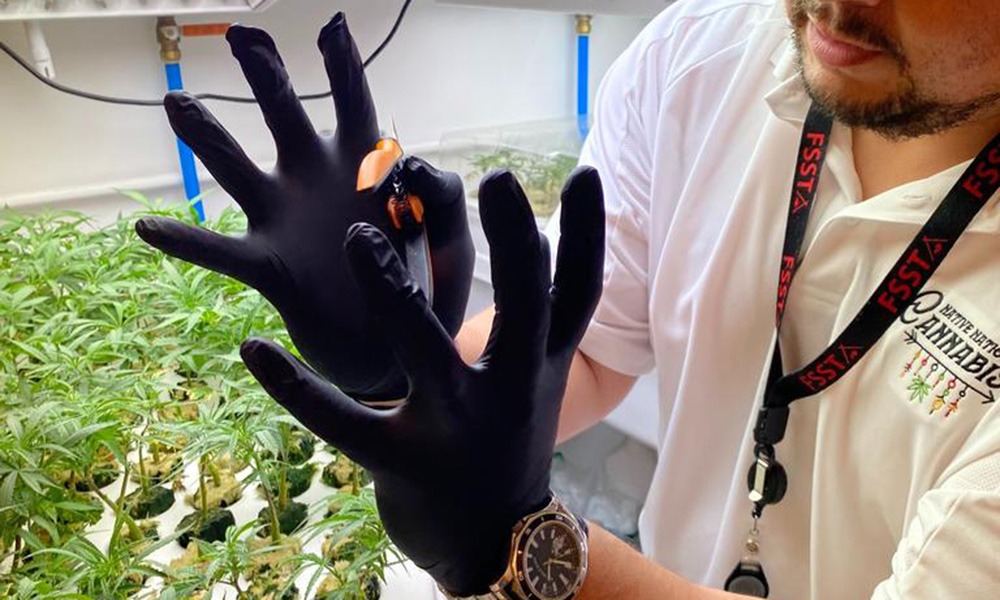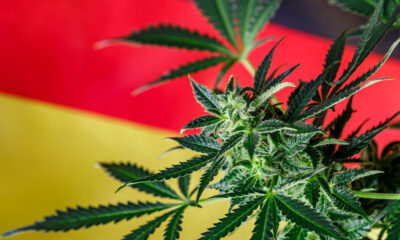
PHOTO Christopher Vondracek / Forum News Service
Legal
How Native Tribal Cannabis Can Beat States to Legalization
South Dakota’s Flandreau Santee Sioux could be the first Native tribe to seize a foothold in the billion-dollar U.S. marijuana industry.
South Dakota is a small place, and the town of Flandreau is even smaller. About 2,400 people located 40 minutes’ drive away from Sioux Falls, the state’s largest city and de-facto cultural capital, Flandreau is the largest settlement on the Flandreau Santee Sioux Reservation — which at 2,356 acres of gently rolling plains near the Minnesota border, is the smallest Native tribal reservation in the state. But on the morning of July 1 — the day of the grand opening of the Native Nations Cannabis Dispensary, the first legal medical cannabis dispensary in the state as well as South Dakota’s first Native tribal cannabis business — Flandreau was possibly the most famousplacein the state. And as an example of what cannabis can do for Native tribes, Flandreau might have been the most important reservation in the country.
Through the grand opening over the July 4 weekend, the tribe registered about 1,000 patients, according to Seth Pearman, the tribe’s attorney general, all of whom were then free to shop at the dispensary. (More importantly: There was no repeat of 2015, when threats from law enforcement thwarted the tribe’s first crack at the cannabis business).
Elsewhere on the reservation, about 10,000 well-tended cannabis plants oozed terpenes in tribal grow houses, waiting for when harvest can net the tribe as much as $1 million a month — or maybe more, if the tribe also becomes the first adult-use cannabis dispensary within driving distance of Sioux Falls, as well asmuch larger cities like Minneapolis, about three and a half hours away.
With Native Nations Cannabis, the Flandreau Santee Sioux were not the first tribe to enter the marijuana industry. Native tribal cannabis businesses are in operation in California and Nevada, and with marijuana legalization sweeping the East Coast and the South as well as the West, tribes in places like Long Island, New York are also pursuing commercial cannabis.

But in a reversal of the federal model that thwarts other cannabis companies from becoming nationwide powerhouses, the Flandreau Santee Sioux are demonstrating how tribes can use U.S. federal law to create unprecedented economic opportunity for indigenous Americans — and skip the headaches that are thwarting other legacy operators in states shut out from legal cannabis. If all goes well, the Flandreau Santee will provide a model for Native tribal cannabis in other states to follow — and be the first in their states to seize a foothold in the billion-dollar U.S. marijuana industry. And as Congress inches closer towards presenting a federal legalization plan to President Joe Biden, cannabis may prove itself more valuable than tribal casinos — maybe, even, the best economic opportunity for indigenous Americans, ever.
“I think [federal legalization] will include the tribes,” predicted Pearman, who envisioned a future where Native tribal cannabis is available in every state, on and off of reservations — and at a price that can break the market.
First Nations First, Finally
South Dakota became the first state in the U.S. to legalize medical and adult-use cannabis at the same time in November. Voters approved both Measure 26, which legalized medical marijuana, as well as Constitutional Amendment A, which ended criminal penalties for limited amounts of cannabis for all adults, by comfortable margins. (The Flandreau Santee Sioux were invested in the outcome: The tribe donated $100,000 in favor of legalization, campaign contribution records show.) Shortly thereafter, South Dakota also became the first state to have its elected and law-enforcement officials stage a revolt to overturn the voters will and maintain deeply unpopular drug prohibition.
With Republican Gov. Kristi Noem’s political support (and with taxpayer-funded legal resources from the state), leading police officials sued to cancel Measure A. A lower court agreed and declared the measure unconstitutional; an appeal to the state Supreme Court is still pending.
Meanwhile, though the state’s medical-marijuana law went into effect on July 1, state health officials have said that medical cannabis recommendations won’t be issued until the fall. And dispensaries where patients could legally access cannabis might not open until next summer.
But what happens in Sioux Falls doesn’t matter too much in Flandreau, which is governed by a 1934 federal law that declares reservations “sovereign nations” — with their own laws, police forces and courts.
All 574 federally recognized tribes enjoy the same sovereign rights — but as the Flandreau Santee found in 2015, there can be exceptions.
False Start
That year, the Flandreau Santee Sioux tribal council voted 5 to 1 to legalize marijuana on the reservation. Work began converting a 10,000-square foot building near the tribal casino into what was believed to be the “first marijuana resort in Indian Country and the United States”— ahead of South Dakota, and well ahead of the federal government.
“Aside from making money, this is about sovereignty,” Kenny Weston, a council member, said at the time. “We have sovereignty, and we have to assert it. The goal for many tribes is to become self-sustaining. Revenue from the marijuana venture will help us to get closer to this.”
The tribe believed it was within its rights. On top of tribal sovereignty, the Flandreau Santee Sioux also had a 2014 letter from the federal Department of Justice. In what’s known as the Wilkinson memo — similar in language and scope to the Cole memo, which says state-legal cannabis businesses aren’t priorities for federal law enforcement — the DOJ said that legal cannabis operations on native reservations shouldn’t attract trouble from federal law enforcement. Since the dispensary would be legal under tribal law, so would the Flandreau Santee Sioux’s Native cannabis business.
Or not. Tribal leaders were summoned to Washington, D.C., where Justice Department officials said sales of cannabis to non-Native people — and the Flandreau Santee’s source of seeds —would pose problems. Fearing a raid, the tribe decided to cancel its plans. The tribe burned its entire cannabis supply in November 2015.
However, everything else — like the grow facilities — were simply mothballed, deactivated but carefully preserved for when the winds changed again. As soon as cannabis could be considered legal off of the reservation in South Dakota, the Flandreau Santee Sioux would return to the Native tribal cannabis industry.
The Best Cannabis Equity
And that’s why Native Cannabis opened on July 1. South Dakota law enforcement must respect medical-cannabis patients throughout the state. Anyone with a qualifying condition can pay $50 to get a card at Native Cannabis, which also recognizes medical-marijuana recommendations from any other state. And as soon as Measure A wins its court challenge and adult-use cannabis is legal, the Flandreau Santee Sioux’s tribal cannabis industry will welcome all adults 21 and over, Pearman said.
In this way, Native tribal cannabis is also demonstrating what may be the best model of equity for the rest of the country. Sold as a make-good for the demonstrably racist drug war, marijuana legalization hasn’t uplifted the non-white communities hurt hardest by overpolicing and incarceration, since these same communities have the least access to capital.
But tribes own and operate their own real-estate and run their own regulations. They don’t need to beg for expensive startup capital just to pay a licensing fee. In other words, they’re set up to start making money from legalization almost immediately — a huge advantage for rural tribes for whom casinos are not an option, who can be free from a “white male monopoly back there pulling strings,” said Joseph Dice, co-founder of Tribal Cannabis Consulting, who works with tribes in California and Nevada.
“When you get a small tribe that has nothing, and you build this infrastructure, it opens up a lot of doors,” said Dice, who offered the example of the Lovelock Pauite tribe in Nevada. A poor tribe with just over 600 members with 20 acres of reservation left, the tribe opened a dispensary — and “within a year people had jobs,” he said.
“It’s about sustainability and self-determination,” he added. “You’re no longer relying on the federal government.”


























